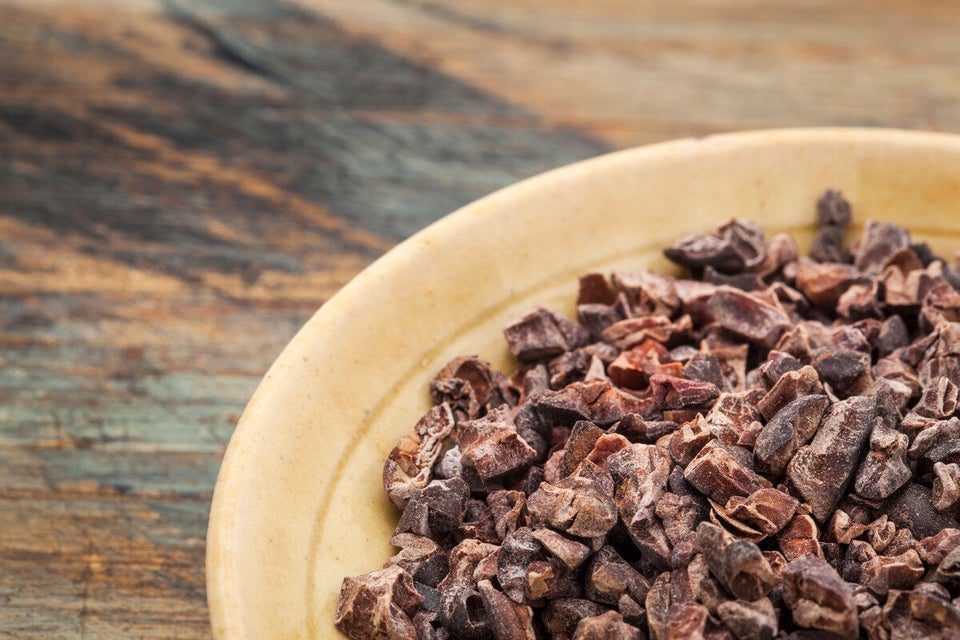
You've heard about the health benefits of dark chocolate, but did you know that you can benefit even more by eating the beans themselves, with less processing? Cacao nibs are cacao beans that have been roasted, separated from their husks, and broken into smaller pieces.
Cacao nibs have a chocolatey taste, but they're not quite as sweet as chocolate, which can make them more versatile. Their flavour can also vary depending on how much they are roasted, with hints of fruity or nutty flavours. It can be an acquired taste if you're used to milk chocolate and bars with sweet fillings, but cacao nibs are a surprisingly useful ingredient. You can snack on raw cacao right out of the bag, add it to trail mixes or smoothies, or use it whole or powdered in your cooking and baking.
There are more differences between cacao and cocoa than just the spelling, at least in how we use the words. The beans come from the Theobroma cacao tree, and the word cacao comes from the Olmec people in what is now Mexico. It's actually thought that the spelling cocoa originated as a mistake that stuck. So the two are technically referring to the same thing, but we generally use cocoa to refer to a more processed chocolate product with added sugar, versus the raw cacao, which has no sugar.
Interested in trying this healthy raw food? Read on for nine things you should know about cacao.
Magnesium: Cacao beans are one of the best dietary sources of magnesium — a mineral needed for more than 300 biochemical reactions in our bodies — with 272 milligrams per 100 grams. It's important for muscle and nerve function and keeps the heart rhythm steady.
Fibre: You don't get any dietary fibre when you eat a chocolate bar, but you do get some when you snack on cacao nibs: one ounce has nine grams!
Iron: Iron, which is necessary for red blood cell production, is found in cacao nibs. An ounce of the raw nibs has six per cent of your recommended daily iron intake.
Antioxidants: Surely you've heard about the antioxidant power of dark chocolate — well, that goes even more for cacao beans, especially when eaten raw. Antioxidants are important for health because they absorb the free radicals that cause damage in the body.
Mood Improver: Neurotransmitters are the messengers in our brains that tell our bodies how to act, and that includes mood. Cacao's ability to act on those neurotransmitters is why it's known for its mood-enhancing skills. Chocolate and cacao stimulates the brain to release particular neurotransmitters that can trigger emotions — including good ones like euphoria. That's why some people say chocolate is better than sex!
Phenylethylamine (PEA): This is a chemical found in cacao, one that our bodies also make naturally. We produce PEA, an adrenal-related chemical, when we're excited — it causes the pulse to quicken, making us feel focused and alert.
Anandamide: Anandamide, a lipid found in cacao, is another compound tied to cacao's feel-good properties. This lipid has been called "the bliss molecule", because its natural molecular shape represents that of THC, the active ingredient in marijuana.
Theobromine: Cacao beans do have a couple of controversial ingredients, though. One of them is theobromine, which makes up one to two per cent of the cacao bean and is a nervous system stimulant that dilates the blood vessels — much like caffeine. This ingredient is what makes cacao and chocolate unsafe for dogs, and some people find that it affects them the way caffeine might.
Oxalic Acid: Oxalic acid is a compound found in cacao that inhibits the absorption of calcium, a mineral that's also found in the food. So though there is calcium in cacao, it's not considered a good calcium source for this reason. The good news is that you're getting more of the calcium by eating cacao than you are if you eat processed chocolate, because the sugar found in chocolate takes calcium reserves from the body.
Other foods also contain oxalic acid, including rhubarb stalks, black pepper, and poppy seeds.
